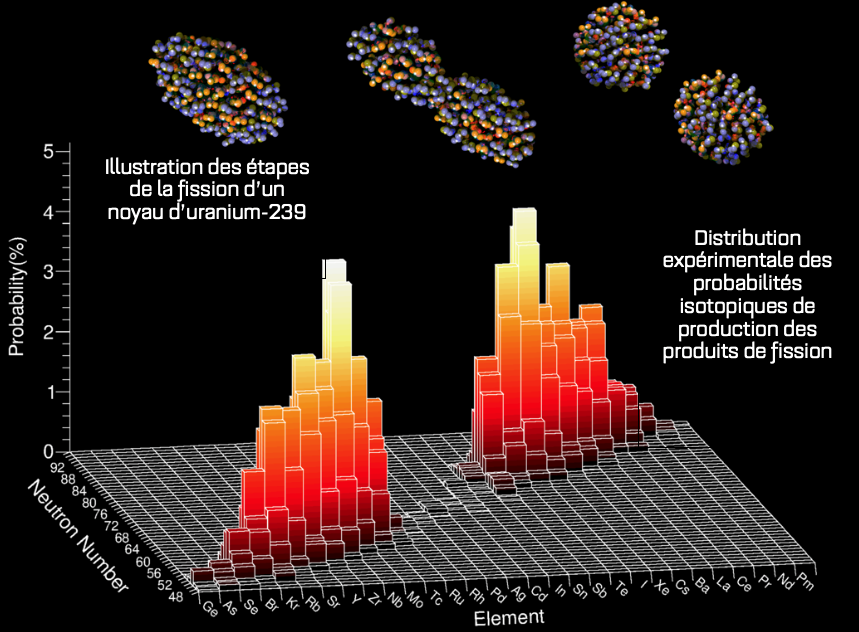For the first time, a team of researchers was able to measure and accurately identify daughter nuclei produced by the fission of uranium-239 fission. This was made possible by the unique combination of GANIL equipment and beams. It is published in the Physical Review Letter*.
This year marks the 80th anniversary of the discovery of the fission process. Quickly, the researchers showed that, with heavy elements fission, many lighter elements are produced and a large amount of energy is released. Today, the fission process is a major source of energy that covers nearly 72% of electricity production in France. In addition, fission is also one of the key phenomena for the management and transmutation of radioactive nuclear waste. The fission process is also used by scientists as a femtometric-scale laboratory (one millionth of a billionth of a meter) to study the properties of nuclear material. It also plays an important role in the production of nuclei in stars, called nucleosynthesis, especially during the process of rapid neutron capture.
During the fission process, the parent nucleus divides into two different daughter nuclei (fission fragments). For the same parent nucleus, there are hundreds of different division possibilities, associated with more or less well known probabilities: the combination of these two parameters is called fission fragment distribution. After 80 years of research, the fission process remains one of the fundamental nuclear processes that challenges our understanding, both experimentally and theoretically. Experimentally, the low energy of the fission fragments makes it difficult to identify them directly (by their number of protons and neutrons) and therefore to measure directly the probability associated with these two fragments. Theoretically, the complete microscopic modelling of this process is difficult given the great complexity of the intrinsic structure and the temporal evolution of fission nuclei and products.
In an experiment conducted at the Grand Acélérateur National d'Ions Lourds (GANIL), in collaboration with European researchers, the complete distribution of uranium-239 fission products was measured for the first time. The performance of the high acceptance magnetic spectrometer (VAMOS ++), combined with low energy and high intensity uranium-238 ion beams, allowed the number of neutrons and protons of each fission product to be measured. This unique combination puts GANIL at the forefront of exploring the fission process.
This measurement allowed to specify the impact of the intrinsic structure of the nucleus on the collective movement of the nucleons involved in the fission mechanism. It opens the way to the measurement of the complete distributions of fission fragments for a large number of fissionning systems. This is a promising, ambitious and competitive program to unravel the enigma of the fission mechanism.

Contact : Antoine LEMASSON, Maurycy REJMUND
*First Direct Measurement of Isotopic Fission-Fragment Yields of 239U
D. Ramos et al., Physical Review Letters 123, 092503 – Published 30 August 2019 https://doi.org/10.1103/PhysRevLett.123.092503
• Structure of nuclear matter › Atomic nucleus
• GANIL • Institute of Research into the Fundamental Laws of the Universe
